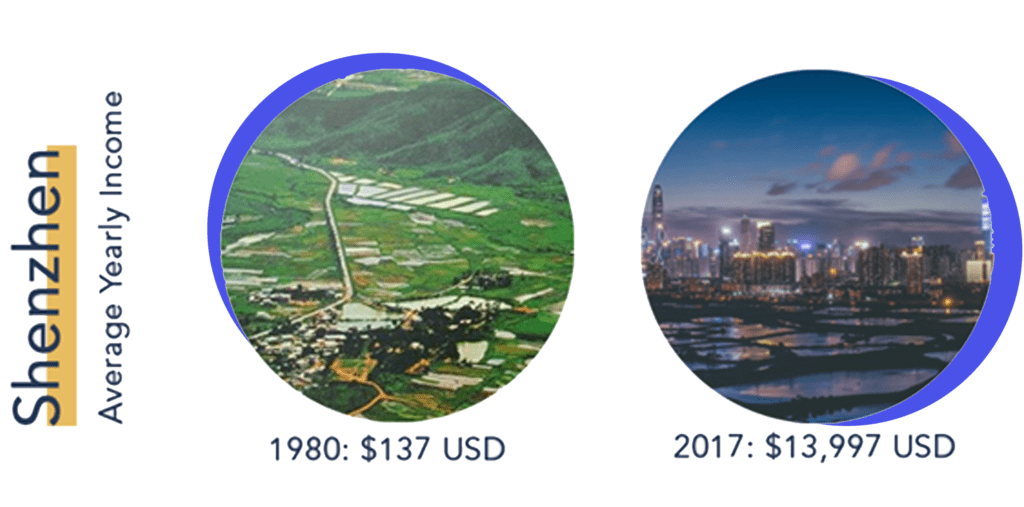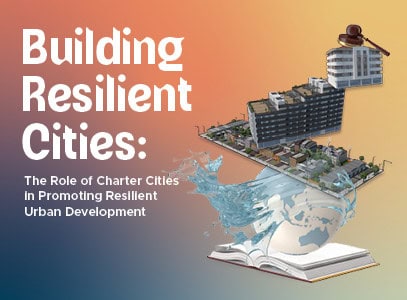Shreya Jose Maliakal & Matthew McCartney
‘It’s the economy, stupid!’
It was a pithy slogan and captured the essence of the 1992 U.S. Presidential election. Bill Clinton ousted President Bush via a relentless focus on the faltering US economy. In 1992 Clinton spoke of the investment needed in roads, computers and factories to create American jobs. Rival (independent) candidate Ross Perot warned during the campaign that a promised free trade agreement with Mexico would create a “Giant Sucking Sound’ as those same computers and factories (perhaps not roads) abandoned US workers and united with cheaper Mexican workers.

This blog focuses on another form of migration, instead of factories moving to people, people can move to factories. We move forward in time and overseas in geography, from the 1992 Clinton campaign to the economic development prospects of contemporary Africa. We suggest,
‘It’s the migration, stupid!’

Don’t worry. We have a solution.
History – Benefits of Migration
Migration has been a key driver of global economic growth over the last two-hundred years.
Migration is about crossing international borders.
Fifty million Europeans migrated to the New World in the late 19th and early 20th centuries. Those migrants populated the industrial cities of the US and the agricultural lands of Argentina, Canada and Australia. Industrialization in the US and international trade in agriculture were the drivers of modern globalization over the next century. Between the 1850s and 1940s around twenty million people emigrated from China, 90% of those to Southeast Asia. This Chinese diaspora later dominated the manufacturing and exporting firms of the mid-twentieth century that drove the rapid economic growth of Singapore, Malaysia, Indonesia and Thailand. The accumulated wealth of the Chinese diaspora returned to China as foreign investment in the 1980s and 1990s and helped spark Chinese economic growth. Much of the foundation for the contemporary Rise of Asia was laid by Chinese migration after 1850.
The benefits of international migration are not just a historical curiosity.
One recent study estimates that allowing workers to migrate and seek the highest wages and firms to seek the most productive workers at an international level will boost global GDP between 50 and 100%. This massive gain can be compared to the few percent of GDP offered by eliminating remaining policy barriers on trade and capital flows.
Migration is also about moving within international borders.
In the late 18th century migration within Britain, from villages to cities fueled the world’s first industrial revolution. This migration encompassed the twin forces of ‘industrialization’ and ‘urbanization’ that then echoed through the succeeding centuries of global economic development. Two hundred years later the same processes were occurring on a more vast scale in China. After 1978, hundreds of millions of people migrated from rural China to booming Chinese cities. Those forces fueled the most dramatic period of sustained economic growth in human history, responsible for lifting 850 million Chinese people out of poverty in only 40 years. Within forty years a cluster of fishing villages with a population of around 100,000 became the city of Shenzhen with a population 12.6 people – urbanization. In 1980 those villages relied on fishing but by 1998 Shenzhen manufactured 14% of the world’s output of floppy disks, 6.2% of PC motherboards, and 8% of hard drives – industrialization.

The benefits of internal migration are not just a historical curiosity.
The global pace of urbanization (internal migration) is accelerating. In today’s developed countries it took 100 to 150 years for the share of the population living in urban areas to increase from 10-20% to 60-85%. This process is now occurring in 30 years. The UN has estimated that in the forty years after 2010 an extra 2.6 billion people will move into cities. Over the past three decades urbanization in Africa has increased faster than anywhere else in the world. In the 35 years after 2015 the urban population of Africa is forecast to almost triple to 1.3 billion.
There is good reason to be optimistic about the development prospects of this acceleration in rural to urban migration. Cities do not make people poor, they attract poor people with the prospect of improving their situation in life. The Oxford University Professor, Lant Pritchett, provides evidence that urbanization passes what he calls a four-fold “smell test”. Firstly, he shows that higher levels of urbanization are associated with higher levels of GDP per capita in a global sample of countries. Secondly, over time income per capita and the urban population increase together. Thirdly, countries that became more developed historically also became more urbanized. Fourthly, countries that have experienced an acceleration of economic growth, such as China after 1980, also experienced an acceleration of urbanization. There is a substantial body of empirical evidence to explain the link between urbanization and economic growth. A review of 180 studies shows that urban population density is associated with higher wages, more innovation, lower car use, and easier access to public services. Productivity increases when firms and skilled workers are in close contact, which enables them to collaborate, compete, share ideas and learn from each other (knowledge spillovers). Firms clustered in cities can access a wider market of inputs, buyers and workers (agglomeration externalities). Firms supplying a large urban market can grow in size and produce a lower cost (economies of scale).
The Contemporary Global Migration Crisis
In 2022 global politics has experienced a rise in populism centered on closing national doors to migration. This anti-immigration politics is mobilized around loudly proclaimed threats to “native culture” and local employment.
The 2016 Brexit referendum came at a time when the influx of asylum seekers (many of them from Syria) entering the EU reached a peak. The anti-EU United Kingdom Independence Party (UKIP) saw a surge in support in response to their repeated warnings about “immigration”. In Brexit Britain immigration became an umbrella term that blurred the complex boundaries between various forms of migration – EU and non-EU, economic and humanitarian, legal and illegal. The UK referendum to leave the EU was an unequivocal demonstration of Europe-wide anti-establishment, xenophobic, populism. On July 1st, 2018 Hungary passed a bill which allowed for the prosecution of community volunteers for providing services and support to migrants and asylum seekers.
In 2017 the US Trump administration issued a Presidential Proclamation “Enhancing Vetting Capabilities and Processes for Detecting Attempted Entry into the United States by Terrorists or Other Public-Safety Threats”. This loudly proclaimed Trumpian politics restricted the entry of foreign nationals from Chad, Iran, Libya, North Korea, Somalia, Syria, Venezuela, and Yemen. The barriers kept rising. The Reforming American Immigration for Strong Employment (RAISE) Act restricted family immigrant visas and so curbed immigration from Mexico, China and India. Under the “Zero Tolerance Policy” unlawful entry became subject to criminal prosecution. Hitherto Temporary Protected Status (TPS) for El Salvadorans, Haitians, Nicaraguans, Sudanese, and Hondurans was removed. Once the U.S. proclaimed “Give me your tired, your poor, Your huddled masses yearning to breathe free”, in 2022 no longer.
In India the political rhetoric is similar. Prime Minister Modi passed the Citizenship Act which gives unapologetic priority to non-Muslims seeking citizenship. Refugees fleeing the conflict in Myanmar have crashed into the Indian wall of anti-migration populism. The Indian government has initiated the deportation of 40,000 Rohingya Muslims, some of whom have received identity cards issued by the United Nations High Commission for Refugees.
The migration debate has focused on the rise of anti-migration politics in receiving countries, largely forgotten has been the migration economics of sending countries. Who is migrating from Africa?
It is not so much the ‘tired’ and ‘poor’ who are leaving Africa. Migration, whether legal or illegal, is an expensive business. African migrants tend to be energetic, young and often skilled and middle class. Small economies with limited diversity in local employment such as Gambia, Cape Verde, Mauritius, Seychelles and Sierra Leone have faced an exodus of skilled labor. Across Africa more widely, the lure of European wages has resulted in a “brain drain”. Africa loses the engineers it needs to build infrastructure, the doctors and nurses needed to alleviate dire health conditions and the educated middle classes that could vocalize support for incipient democratization. In 2004, Ghana lost more than £35 million spent on the training of health practitioners who left for the UK. The UK in turn avoided having to spend £65 million on medical training. African brain drain is foreign aid, but in a rather perverse direction!
The Domestic Migration Crisis
As noted above Africa is now the epicenter of global urbanization. Rural to urban migration in Africa is occurring at a much lower income level than historically in other continents. Now over 40% of Africa’s population is living in urban areas, with an average GDP per capita of about $1,000. Asia hit 40% in 1994 with a GDP per capita of $3,617. Without the tax revenues generated by rising incomes (and don’t forget those migrating engineers) African governments have struggled to build the necessary supportive infrastructure. The urbanization of people has not been accompanied by an urbanization of housing, infrastructure and business investment. African cities are crowded with people living in informal slums. Neighborhoods are scattered and sprawling without the connecting transportation infrastructure that would allow firms to reap agglomeration benefits and workers to access jobs.
The link between urbanization and economic development is not automatic. This link has broken down across much of contemporary Africa and after 1970 urbanization has failed to boost per capita incomes. African cities have become cities of ‘consumption’ rather than ‘production’, with a large share of their workforce in non-tradable services such as retail rather than manufacturing and tradable services. Gabon, Libya, Malawi, Angola, Zambia and Nigeria have high rates of urbanization with little industrialization.
Charter Cities as a Solution
The failure of domestic migration (urbanization) in Africa is central to the global migration crisis. Too often the energetic and skilled of Africa turn to international migration when domestic migration fails to offer good employment prospects. Remember the Vietnamese Boat People of the 1970s and 1980s? Around 800,000 people fled poverty and persecution in Vietnam and provoked a global political controversy as to whether and where they should be granted asylum and residence. The phenomenon vanished in the 1990s and 2000s as market-oriented reforms and economic growth in Vietnam drove domestic urbanization, industrialization and job creation.
Our solution for Africa learns from this recent history. Our solution is charter cities.
Charter cities would help solve the international migration crisis.
A charter city is a newly built, greenfield city that is defined in terms of its ‘special jurisdiction’, whereby the new city government is delegated authority by a host country to write new laws of city governance. Being greenfield no-one will be rendered an involuntary migrant as they see their existing city and home turned into a charter city against their wishes. A new city can’t simply be a gated community for the wealthy. Building a new city requires legions of workers in construction. A new city needs to be operated and run by all those blue-collar jobs which offer an escape from poverty for the poorest, drivers, cleaners, security guards, factory workers, and retail workers. A charter city would need the schools, hospitals and professional services that could employ the better-educated children of first-generation migrant factory workers. A charter city would help create the white-collar to employ skilled workers in Africa, to turn their talents to domestic development, rather than international migration. Fewer international migrants would help take the heat out of anti-migration populism.
Charter cities would help solve the domestic migration (urbanization) crisis in Africa.
A charter city has autonomy enshrined in and legally protected by a charter. The host country delegates all authority to the city government except for criminal law, international treaties, and the constitution. Autonomy gives the new city an opportunity to create good institutions such as investor-friendly laws, dispute resolution mechanisms and a quick land acquisition process. An opportunity, but we may ask why will new city builders use this autonomy to create good institutions rather than enriching themselves? The answer is incentives. The construction firm that builds a charter city is ideally also responsible for managing the city after construction. The construction company is granted ownership or a long-term lease over the land on which the city is built. Because the city developer leases or owns the land, they are incentivized to create an effective administration, good institutions and to provide public goods in order to increase economic activity, raise the value of that land and collect more revenue from its leases. The construction company has an incentive to build the cities that solve the twin crises of African urbanization and industrialization.
Those twin crises related to international and domestic migration are undermining the prospects for economic development in Africa. We propose a simple, but powerful solution.
It’s the Charter Cities, Stupid!








